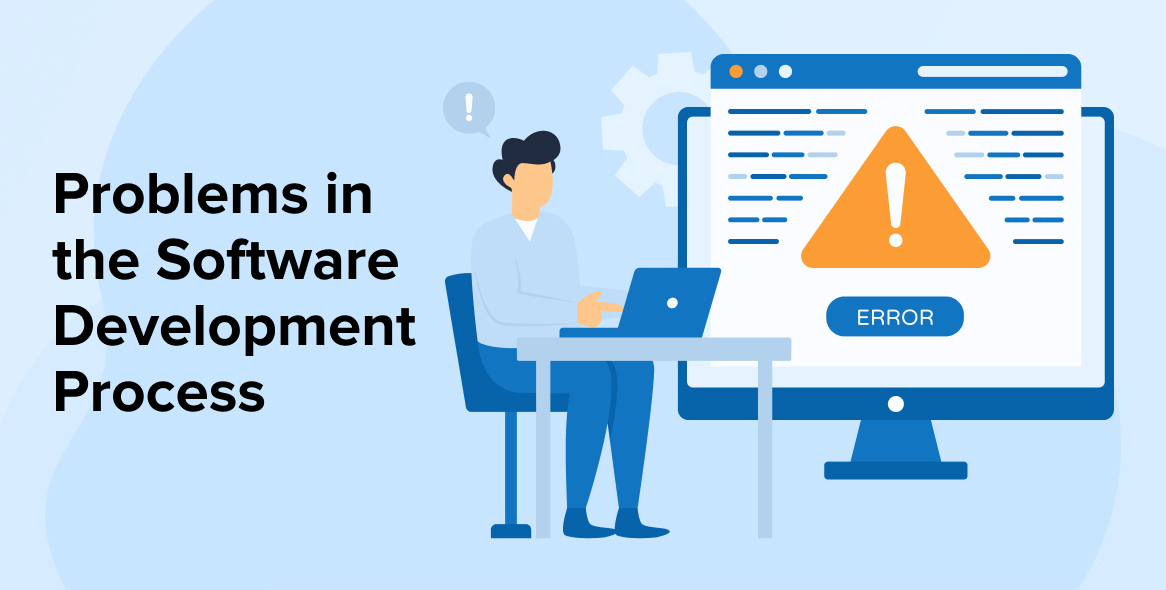
A remarkable outcome of the software development process is not produced by coincidence. It requires meticulous preparation and execution. Preparation before beginning the software development project plan impacts entire project success or failure.
A well-planned custom software development process involves a goal, distinct objectives, a timeline, changes, and deliverables. Project managers can obtain knowledge of costs and resources using these. Defining these factors will improve the efficiency of a project. Additionally, it stops the development from slowing or stopping.
This article explains why a software project planning is necessary. It will explain how to construct one and provide helpful advice.
1. What is a Software Development Plan?
A software development plan is the practice of structuring the management of a project. It is a blueprint to convert the given project requirement into a proper functioning software product. It also defines the actions and resources necessary for its effective completion.
Software development project plan includes a development project’s timetable. The software development plans contain all aspects of the development phases, including assessment and planning, functionality details, concept generation, design and development, integration, manufacturing and release, and maintenance.
Effective software development project plan includes documenting and covering every aspect of the project idea, scope and objectives to a detailed schedule, project tracking, intended outputs and changes, expense and required resources assessments, risk management, and everything else that could come up.
Therefore, the success of the project is highly dependent on the quality of the software development project plan. Additionally, it permits the best distribution of resources precisely where they are required. Without preparation, you run the danger of encountering too many obstacles along the ongoing process, resulting in delays, increased expenses, customer discontent, low morale, and low team performance.
Therefore, proper project monitoring and planning of software development projects is crucial for all parties involved, including product owners, stakeholders, software project managers, and software development teams.
Project planning is ideally carried out by a project leader in collaboration with the relevant project team members and in coordination with clients as well as other divisions with interest in the project’s accomplishment, such as testing or quality assurance teams or marketing professionals.
Not only would you have a defined software development project plan template in place for everyone, but you would also produce more time- and cost-efficient software in a much less stressful manner for both the supplier and client teams.
Among the additional advantages of planning and adhering to the software development life cycle are:
- It establishes explicit procedures and communication routes among the participating parties.
- It establishes duties and responsibilities for each team member.
- Everyone is aware of the status and completion criteria for each development phase.
- It defines early guidelines for post-production tasks such as bug fixes, new features, and upgrades.
2. What are the Goals of Planning a Software Project?
We might state that the primary objective of planning is to organize the process to ensure that the client and user objectives are satisfied and to prevent problems and misunderstandings. The manner of execution will have a significant impact on the success or failure of the project.
If you were to delve a little more into the goals for planning a software development project, it would be to have a comprehensive understanding of:
- The software project’s fundamental objective.
- The activities and subtasks necessary to satisfy each functional requirement.
- The list of priorities for the development of functionalities.
- The participants and their respective tasks and duties.
- Resources and reasonable projections.
- The performance and process measurements are useful to quantify work productivity and quality.
Here are the most crucial objectives and prerequisites for good planning are:
- A clear understanding of the targets and requirements
- Using time and money-saving methods to complete the job.
- Having a thorough project roadmap documentation
- Compliance with development quality guidelines
- Providing end consumers with trustworthy, and high-quality product
- Providing the necessary flexibility to allow modifications and revisions without impacting the process.
A well-considered development strategy is also beneficial in the event of a crisis or barrier. By adhering to the procedure, it is simpler to identify and eliminate obstacles without damaging the deadline.
3. How to Create a Software Development Plan?
As a tech manager or software engineering supervisor, you are already aware of these software development life cycle phases. Those are essentially the same processes for each software project, regardless of the selected approach. Not to forget the role of BA in software development projects because they are the ones behind eliciting requirements, documenting, collaboration, and accountability to confirm high level solutions.
Ultimately, you are accountable for the productivity of your team, the quality and effectiveness of the provided software, the engagement with stakeholders, and the synchronization of engineering targets with business priorities.
So, what procedures must be taken to begin a software project? The first is comprehensive planning.
3.1 Project Analysis and Planning
This is the initial step in the planning phase of a custom software development project. It has a great importance with the project’s viability.
This phase of the study assures a solid start by examining:
- A greater comprehension of the project’s objective (concept and goals).
- A better comprehension of the project’s requirements.
Typically, it occurs concurrently with the needs and primary planning phases, as they are interdependent.
3.2 Define Project Requirements
As you get to the next phase of the project strategy and proceed to define the budget, you and your software development team will begin to record the technical requirements necessary for the successful delivery of the software product.
In this phase, your obligations are to:
- Determine the group accountable for the growth.
- Identify the prerequisites.
- Determine the project milestones that will serve as checkpoints for testing and review.
You and your team will be answering questions like, “What problem does this project solve?” “How will we implement this solution?” To whom does this product ultimately cater? What kind of information is required? Do certain plug-ins have to be installed? How is safety ensured?
As you address these questions, you’ll have a better understanding of the technical parameters and objectives, testing procedures, technological stacks, software and hardware, and methodology (you could begin sprint planning, if you’re employing Agile).
In this phase of planning, you should do a risk analysis to ensure that you have a thorough grasp of any potential hazards or limitations that might affect your project.
3.3 Assemble Your Team
One or more teams of specialists with the necessary knowledge and abilities are needed to oversee the project of developing custom software. If your organization does not already have these key players on staff, you may either go elsewhere for help or pay a third party to find and recruit them.
While opinions across the organization’s ranks are welcome, just one vote is required to make the ultimate call. No one wants their initiative to flounder for lack of leadership. As a result, it is important to hire a seasoned project manager to oversee the preparation and implementation phases.
3.4 Design & Prototyping
Conceptual designing comes next in a well-thought-out software project strategy. This is strictly related to the structural integrity and operational efficiency of the project and has no connection with its visual appeal.
Software architects and engineers carry this out to ensure the project’s needs are met in terms of functionality, structure, and flow. As an example, it may contain:
- Every part of the software and all of its capabilities
- If necessary, hardware and software components
- Future-proofing software tools
- Methods that help an organization achieve its objectives.
The goal of this phase of software development is to get initial input from customers on the proposed aspects by creating either basic, easy-to-understand wireframes that depict the operations and exchanges of the product or by prototyping, if you require feedback from customers on the proposed functionalities.
3.5 Establish Milestones to Track Progress
Reviewing this checklist item from the planning procedure before moving on is very important.
Establishing software metrics for tracking and measuring performance and code quality is essential. These targets should be established early in the process of creating the project so that the work may flow smoothly and with little interruptions.
Ineffective project management is inevitable if you don’t take the necessary measurements to collect and present useful data.
In the software development process, project analytics, also known as development analytics, are crucial tools for properly spotting and removing any future or present barriers.
By keeping tabs on and analyzing these software metrics, you may get a clearer picture of things like work patterns, code quality, and deployment preparedness, to mention a few.
You may monitor and evaluate developer productivity from beginning to end with the help of technical solutions.
The Project Timeline report, for instance, contains the most useful indicators of a programming exercise. Over the course of a sprint or any other period of time you specify, you may monitor the progress of your team’s efforts.
An impartial assessment of the project’s needs can lead to faster, higher-quality software development; the identification of gaps in resource availability; or a reevaluation of the project’s target delivery date.
With the automatically generated executive reports on resource planning and project costs, you may receive invaluable visibility into how resources are employed and how to help teams meet delivery deadlines.
3.6 Budget Estimation
This is a crucial part of the plan. It costs money to do anything in a software development project. In order to achieve success, it is crucial to lay out a clear set of guidelines and expectations. As a result, you will have a better idea of how much the whole job will cost. Spending constraints must be balanced with adequate quality. This is why many businesses nowadays choose to outsource their development work. They calculated the savings and determined that it was preferable to complete the work in-house.
4. Risks Associated With Software Development Planning
4.1 Unclear Goals
When there are defined outcomes, success may be evaluated. To rephrase, if success is merely a concept, it is impossible to realize it. Unclear objectives can derail even the best-laid plans. In the course of its development, a project’s initial intent may change significantly. Something has been made, but it’s not what was expected or needed for this project. Without a defined end point, efforts of such nature are certain to fail. As a result, it is important to learn as much as possible about the issue at hand at the outset of a project when you are still in the planning stage. Think about the criteria that will indicate success.
4.2 Inadequate Documentation
While it’s necessary to be flexible, it’s also crucial to record every major decision, milestone, and outcome of the project from the get-go. Including the client stories and acceptance criteria can help your developers learn about the user’s needs and work towards a unique solution.
4.3 Communication Gaps
Communication is crucial in this endeavor as it is in any other. Tools for user research and direct communication might be useful here. Their input is crucial in identifying the target market and shaping the final product accordingly. If you skip them or user validation, you risk making a useless product. Make sure you don’t forget any external groups working on the project. They, too, will value and profit from your open lines of contact with them.
4.4 Scope Creep
A drastic shift may be necessary if your plan does not precisely describe and document your intended outcomes and the necessary strategy. Your sprint objectives will be overly ambitious, which will cause you to fall behind on feedback and miss your deadlines.
Take use of agile project management strategies, which will make software development much simpler to oversee. When working on a large project, it might be helpful to divide it up into smaller, more manageable chunks, and an agile software framework can help you do just that.
5. Conclusion
As earlier noted, the ideal root for a business is a vision. Since the whole approach is based on software product development and transforming fresh ideas into functional goods, it offers you a comparative benefit and allows you to dominate the market.
Idea creation, screenings, design development, running tests, business model, financial analysis, project management, market entrance, and commercialization are all steps in the New Product Development process.
Many product development software firms adhere to the golden rule of innovating unique technologies while synchronously offering value to draw customers. A software product development company, such as TatvaSoft, fosters the growth of your software development business because it is the top software development outsourcing company for you.






The article provides helpful tips for developing a software development plans, from comprehending project objectives to putting together the best team and establishing milestones. Clear goals, sufficient documentation, efficient communication, and minimizing scope creep are all stressed throughout the text, and this is vital. Thank you for sharing article!
Creating a software development project plan involves several key steps. This article is a perfect guide on how to create a project plan for a software development project.Most important point this article cover is project planning is an iterative process, and it is essential to adapt and adjust the plan as the project progresses and new information becomes available.